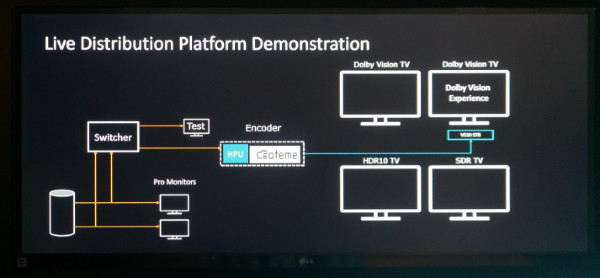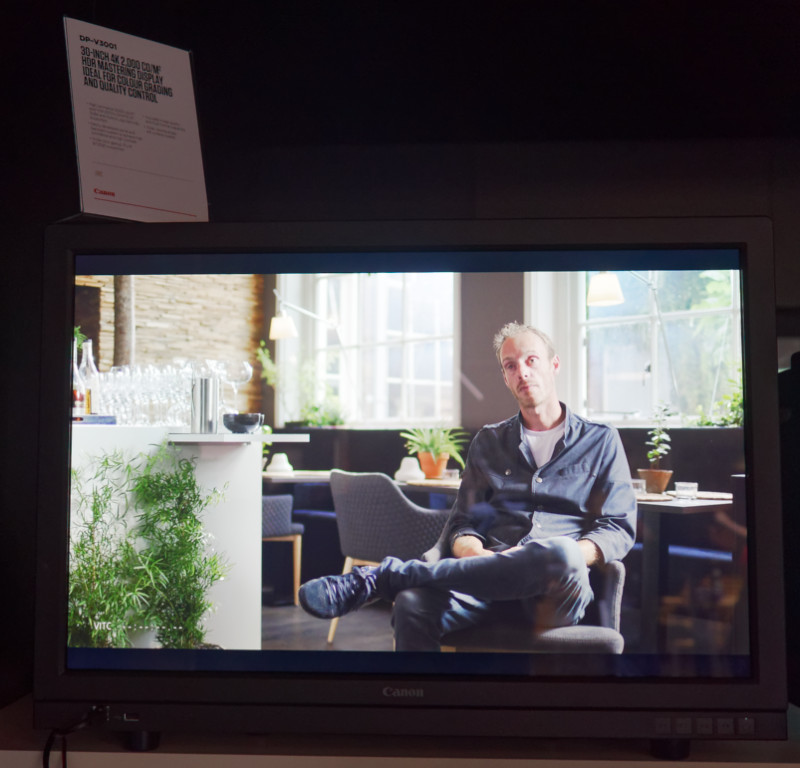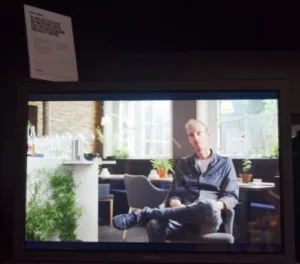I still have a lot of work to do to finalise my report on the IBC event that finished last week, but there were a number of things to see and think about. As usual, if you didn’t know the acronyms, you’d soon get lost.

We’ll have the full report for subscribers to our main newsletters. However, here are some of the highlights that I spotted – although there was plenty more that I didn’t get to!
There was general agreement that at the production level, UltraHD is now the standard for production. There is still a lot of work to do to get UltraHD to viewers, but content creators are there already. Some content, such as nature documentaries and dramas, has a ‘long tail’ of opportunity for content sales and so programme makers are keen that their content is seen as high quality for a long time into the future.
One of the announcements that we spotted at the show was the launch of a new 8K camera by Sony. Although 8K broadcasts don’t start in Japan until the end of next year, content creators are already thinking about meeting the need. However, Sony also highlighted a feature in the new camera that allows a 4K (or even a FullHD) window to be extracted from the 8K signal. That allows directors to capture a lot of the area of a sports pitch and then choose the view that they want to show. NHK showed its latest 8K developments.
HDR Everywhere
Of course, HDR was a big topic, as you would expect. Lots of companies in many parts of the industry were showing HDR content and we went to a very interesting talk by the BBC about the developments in HLG, one of the two formats supported in BT2100 for content creation. Many of the demonstrations that were on the show floor used OLED TVs from LG, or its customers, and looked very good. LG told us that it loaned only two screens, so most had been purchased. There were more solutions to help deal with the range of different HDR content formats and technologies.
Dolby demonstrated a concept that it had talked about at NAB that puts the creation of dynamic metadata for its Dolby Vision technology into the encoder at the point of compression. This avoids the need to manage dynamic metadata during the production process – a significant factor in the popularity of HLG with broadcasters. The Dolby system includes technology that can map its content to the optimum according to the type of TV or display being used. This might be a good solution where a PayTV operator can control the STB being used.
 Dolby was demonstrating the delivery concept for HDR, proposed at NAB. Image:Meko
Dolby was demonstrating the delivery concept for HDR, proposed at NAB. Image:Meko
Ericsson also showed its Intelligent Tone Mapping technology which can convert between all the different flavours of HDR, in production, in transmission or in the viewer’s home. We also heard the intriguing comment that “the advantage of HDR10+ is that it’s not difficult to take the metadata from Dolby Vision and interpret it to HDR10+”.
Broadcast Monitors See a Quality Breakthrough
Of course, there were some interesting developments in broadcast monitors. Up to now, the undisputed leader in terms of image quality has been Sony’s OLED-based broadcasting monitors, but at this show both Eizo and Ikegami had monitors using a new LCD panel that can produce up to 1,000 cd/m² of output with contrast of 1,000,000:1. Unlike monitors that have directly dimmed LEDs in the backlight, these monitors have double layer LCDs that can modulate the backlight at the pixel level, so there are none of the ‘halos’ that are sometimes seen in other high contrast LCDs.
Eizo, which is new to the broadcast market, was showing a ‘side by side’ demo of its new monitor with a Sony OLED – a brave action. The demonstration showed how much better the LCD was in maintaining its brightness as more and more of the image was bright than the OLED, which saw the ABL kicking in and lost quality. The monitor is not perfect, but it’s the first time that we have seen an LCD that can really compete with OLED on image quality. Elsewhere, others had 2,000 cd/m² monitors using 2,000 direct LEDs and Canon had one that used RGB LEDs. However, the Canon is very, very deep, suggesting some heat and power issues and costs a lot (at €50K to €60K it makes the Sony OLED look cheap!) so the company told us that it would just make it to order.
 Canon’s LCD Monitor looked good, but at €50K to €60K, it should do! Image:Meko
Canon’s LCD Monitor looked good, but at €50K to €60K, it should do! Image:Meko
Elsewhere at the show, there were lots of developments in ip transmission for video. We got an update on the new JPEG Mezzanine compression system which will allow up to 6:1 compression and is based on a combination of Fraunhofer’s Lici codec with Tico. One of the advantages of this technology is that it will be usable to allow the transmission of UltraHD over the SDI hardware used for HD. It could also be used to support 8K over interfaces designed for UltraHD. The standard is expected to be completed and published next year as JPEG XS.
For the first time in several years, Sony did not have a big data centre on its booth to show its workflow products. Instead, the firm put in high speed internet and was demonstrating everything ‘in the cloud’. – BR

